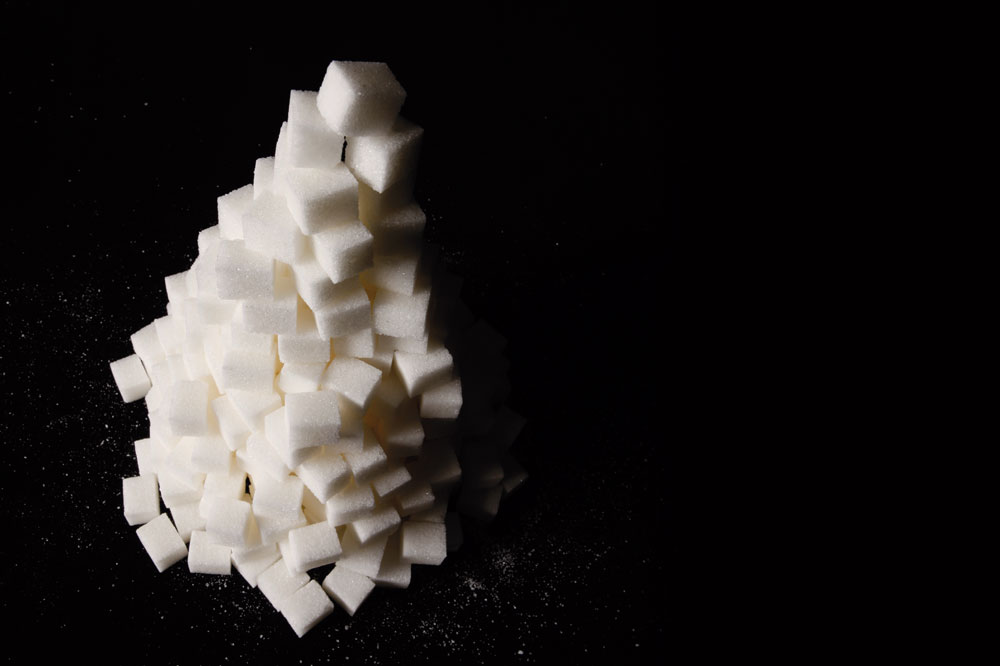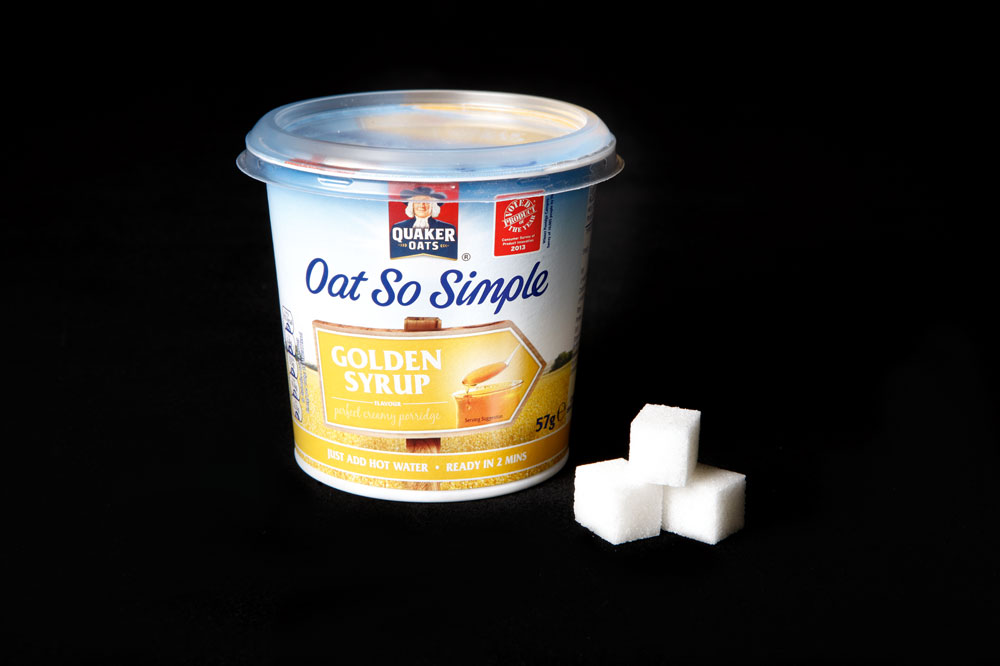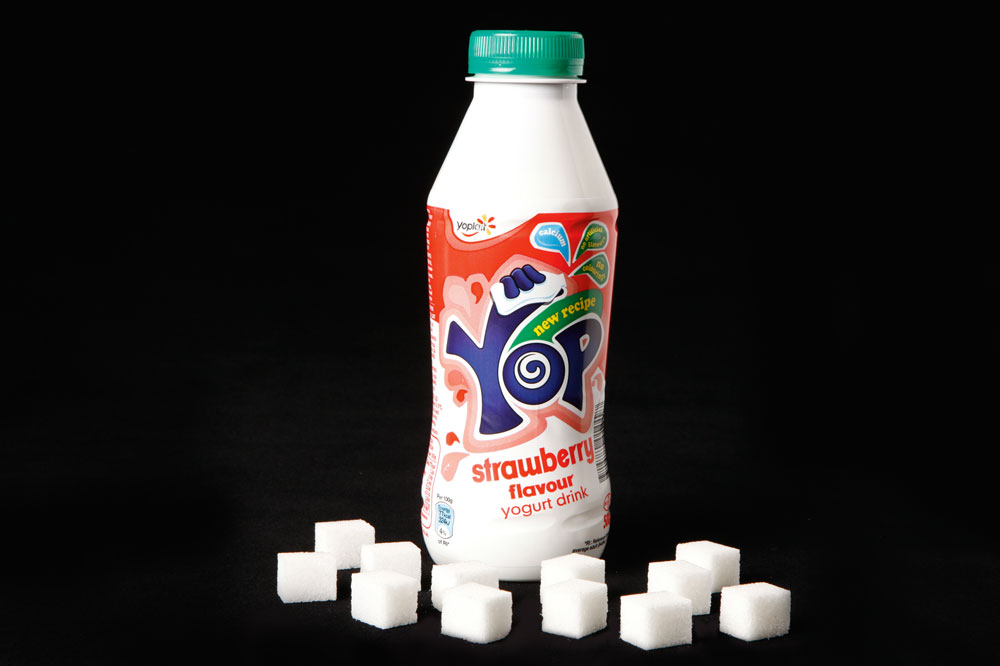Beat the sugar addiction
Arguably as addictive as cocaine and responsible for soaring levels of obesity, sugar is the most-wanted villain in our worsening national health crisis. Laura Tilt looks at why - and how - to free yourself from the clutches of the sweet stuff

Sugar. It’s everywhere. From the sweet syrup lacing your morning coffee to the soft cheese on your toast (often made from sugar-sweetened bread), the white stuff has slowly sneaked its way into our food chain and has become a habit we just can’t kick.
Which means we’re in trouble. A growing body of research has found links between high sugar intake and an increased risk of health problems including obesity, heart disease, cancer and even Alzheimer’s. But that’s not all.
New research demonstrating the addictive properties of sugar suggests we might be more hooked than we’d like to admit. The substance has become “the most addictive drug of our times”, according to Paul van der Velpen, head of Amsterdam’s health service.
Once an expensive luxury for the well-to-do, sugar is now a commodity for all, regardless of wealth. In fact, growth in consumption of sugar has been strongest in developing countries, corresponding to rising incomes and diet changes. According to a recent report from the Fairtrade Foundation, global consumption of sugar has grown by almost three per cent each year for the last 50 years.

There’s no doubt that sugar is big business — but how much are we really eating? Accurate figures are tricky to come by, but based on latest reports from the National Diet and
Nutrition Survey (a rolling programme that looks at eating habits in the UK), we’re consuming on average 60g of added sugar a day — that’s around 15 teaspoons or 12 per cent of our daily calories.
Bear in mind, figures are based on self-reported intakes; it’s likely actual consumption is even higher, as intake of foods regarded as unhealthy is commonly under-reported.
The latest race content, interviews, features, reviews and expert buying guides, direct to your inbox!
So how does this compare to how much sugar we actually need? The stark (and often unrecognised) truth is that the actual requirement for added sugar is zero — it has no nutritional value, it’s just empty calories. Recommendations regarding intake are based on the amounts deemed to be safe in regard to health — but this ‘safe’ level that is hotly debated.
Current guidelines from the World Health Organisation (WHO) recommend consuming no more than 10 per cent of total calorie intake from added sugars — that’s 50g per day, based on a 2,000-calorie diet. When this recommendation was published in 2003, it was met by searing opposition from the sugar industry, who threatened to revoke funding, calling the recommendation “misguided”.
Ten years on, indications are that the WHO is set to lower targets for sugar again, following a review of the evidence linking sugar with obesity. This has been reinforced by recommendations from the American Heart Association, which suggests no more than 24g of added sugar per day for women, and no more than 36g for men, based on newer evidence linking added sugar to raised blood pressure, blood fats and inflammation.

Unsurprisingly, industry figures for sugar intake are more generous. The Guideline Daily Amounts (GDA), developed by the
food industry as an alternative to traffic light labelling found on food packaging, suggest that up to 90g of sugars a day is OK. These guidelines take into account sugars from milk, fruit and vegetables, which confuses matters; the percentage of GDA stated on a can of cola, for example, is based on a daily allowance of 90g.
GDA does little to acknowledge health risks from too much sugar, though it does note that, for those watching their weight or suffering a diet-related medical condition, it’s important to “keep an eye on your intake”.
One thing is clear — steps to reduce sugar intake won’t be implemented without an industry fight.
Sugar and cycling
All this talk of cleaning sugar out from your diet seems to be in direct contradiction with recommendations for using energy drinks, gels and bars — products that are designed to be high in sugar. However, for cyclists taking part in endurance exercise, high-sugar products have a time and a place, provided they’re used wisely.
A well-formulated energy product doesn’t use simple white table sugar, but a blend of fructose and maltodextrin. Combining these two carbohydrates maximises the uptake of carbohydrate and provides both fast- and slow-release of fuel.
Energy products should only be used during hard training and racing. If you use gels and energy drinks every time you ride your bike, you are stopping your body from using fat as fuel — one of the key objectives of most people’s training. You don’t need supplements for moderately hard rides of less than an hour, or for easy rides of less than two hours.
For endurance cyclists, sugary snacks aren’t always a bad thing, as long as you eat them only when you are cycling. Jelly Babies, for example, are useful as fuel for long or hard rides.
Health issues
The causal relationship between sugar and tooth decay is well known and has long been an argument for lower sugar intake, but newer evidence suggests that it’s not just our teeth we need to be concerned about when it comes to sugar.
One issue is that sugary foods replace other more healthy foods. The argument that sugar is just ‘empty calories’ — calories that have no nutritional value — is even more compelling when you consider swapping a slice of cake (around 300kcal and 22g sugar) for something more nutritious (eg a two-egg-and-vegetable omelette and yoghurt).
Another key concern is the relationship between sugar and obesity. Although some deny any association — mostly those in the ‘a calorie is a calorie’ camp, who say it’s the overall amount that matters, not what foods calories come from — the evidence to suggest otherwise is mounting.
Since the 1980s, sugar has stealthily been sneaked into more and more of our diet as we’ve worked to reduce fat intake. We have been eschewing eggs and milk in favour of 99 per cent fat-free biscuits and cereals, but all the while our waistlines have continued to expand.
One of the main problems with sugar as regards body weight is that it’s a source of easily consumed calories. Sweet foods are highly palatable — put a bowl of non-sugared porridge on the table and you’d be hard pushed to eat more than one portion; were it a bowl of sugary cereal or slice of cake and you’d have no problem polishing off several helpings.
Trouble is, you’d also be hungry again an hour later. Another concern is that calories from liquid carbohydrates like sugar-sweetened drinks don’t put the brakes on our appetite in the same way that solid food does. The 140kcal from a can of cola might quench your thirst, but they’ll do little to fill you up, which means you eat more in the long run.

Earlier this year, a BMJ review of studies looking into sugar intake and body weight concluded that sugar intake correlated with body fatness, and the authors agreed that a reduction in intake would be beneficial for weight reduction.
But weight gain is not the only issue. Last year, researchers from Edinburgh University found there was an increased risk of bowel cancer among those with diets high in sugary snacks and sweetened drinks. Although not conclusive by any means, this joins other evidence that shows an association between high intakes of added sugar and soft drinks and certain cancers — even after adjustments for obesity have been made.
Highly addictive
High-sugar diets (and sugary drinks in particular) have also been linked, to varying degrees, to increased risk of heart disease, dementia and type 2 diabetes. If sugar is so bad, we need to learn to say no. Easier said than done? Yes, almost certainly.
Recently scientists at Connecticut College found that lab rats displayed equal levels of brain activation and addiction to Oreos chocolate biscuits as they did to cocaine. In fact, the Oreos activated significantly more pleasure’ receptors in the rats than cocaine or morphine, lending highly compelling support to the hypothesis that high-sugar foods have addictive qualities.
Researchers believe such studies are relevant to humans and go some way to explaining why we find it hard to say no when faced with a packet of biscuits. And it’s not just studies with animals from which such worrying conclusions have been drawn.
In a 2013 study, researchers from the Boston Children’s Hospital found that test meals with a high glycemic index (the equivalent of sugary cereals, biscuits and sweets) activated areas in the brain associated with reward and cravings in obese adults. The high-GI test meals also resulted in excessive hunger.
Regardless of whether or not you feel addicted, the evidence suggests that if you lower your sugar intake, your health will reap benefits, and you’ll likely lose weight too — that’s a good enough reason, in our book, to give it a go.
Savour the savoury - Eight steps to quitting sugar
Committed to cutting sugar from your diet? Here’s how
1 - Don’t go cold turkey
Unlike with some other ‘addictions’, trying to go cold turkey on sugar is a tall challenge — the habit is hard to break. Manufacturers know this, which is why, when they reformulate products to have less fat, sugar or salt, they do so gradually to avoid losing customer loyalty. Quite simply, sweeter food sells more.
The key is to give your palate time to adjust, which means weaning yourself off the white stuff slowly. Work on reducing your intake a little at a time. If you take two sugars in your tea, reduce by half a teaspoon until one becomes normal, and then cut down again. Taste researchers suggest it can take up to five months for taste preferences to change, so allow yourself time to adjust.
2 - Rethink your breakfast
Most of us are aware that breakfast cereals tend to be high in sugar, so if you haven’t made the swap, it’s an obvious place to start. Even the so-called ‘healthy’ cereals such as Special K are offenders containing 17 per cent sugar.
Aside from Weetabix and Shredded Wheat, few manufactured cereals qualify as low-sugar, so your best bet is porridge oats. Alternatively, try making your own cereal from a mix of oats and unprocessed whole grains, with added nuts and seeds.
Better still, ditch the cereal breakfast altogether and go for eggs or plain yoghurt with fresh berries and nuts — a higher-protein breakfast will keep you feeling fuller for longer and provide more nutrients than a bowl of cereal. Remember, breakfast doesn’t have to be sweet; try a savoury option instead.
3 - Ditch sugar-laced drinks
Not only are sugary drinks a source of empty calories, they also show the strongest relationship with obesity. In one US study, consuming one sugary drink a day was associated with 15lb of weight gain over a year.
Swap sugary drinks such as cola, ginger beer and sugar-laden squash, for water (still or sparkling), sugar-free squash or unsweetened teas. If you’re trying to quit a fizzy drink habit, you can swap to ‘diet’ varieties, but long-term you might want to think about reducing your intake, as ‘diet’ fizz won’t quell your desire for a sweet taste.
The same goes for fruit juice — remove the fibre and you remove the benefits, and you’re left with little else aside from rapidly absorbed calories. Dilute it if you can’t say no, or have tomato juice instead. Caffeine addicts, beware of syrups in the coffee bar — keep your coffee au natural, and watch out for sweetened soya milk (5g per 200ml).
4 - Switch up your yoghurt
Much like cereals, yoghurts are key offenders when it comes to added sugars. Around 6g of sugar per 100g can be attributed to lactose, the natural sugar in milk, and anything else is added. An average 125g pot of low-fat fruit yoghurt can have up to 17g of sugar, more than four teaspoons of added sugar.
Check the label and opt for a lower-sugar alternative, or better still go for the natural variety and mix in your own fruit. Pop in a blender with frozen berries for an instant no-added-sugar frozen dessert.
5 - Become a label sleuth
If you’re serious about quitting sugar, you need to learn to read the labels. Sugar content is often ‘hidden’; manufacturers use other names that they feel are more acceptable to consumers. Look for the suffix ‘ose’: sucrose, glucose, dextrose, fructose and maltose are all forms of sugar. The same goes for corn syrup, honey, molasses, fruit juice concentrate, invert sugar, maltodextrin and brown rice syrup.
Remember that ingredients are listed by weight, which means if sugar appears near the top of the list, it’s a significant contributor — the overall amount is likely high. If you’re unsure, check the ‘per 100g’ information; any more than 15g of sugar per 100g is classed as high.
6 - Wipe out refinedcarbohydrates
Part of the reason sugars are so addictive is that they stimulate reward and pleasure centres in the brain, but similar effects are seen with rapidly absorbed carbohydrates such as white bread, refined cereals and grains. These foods cause a rapid rise in blood sugar followed by a ‘crash’, which leaves you craving more.
Refined foods also stimulate hunger and make it harder to control appetite and body weight. Switch bagels, white bread, pastries and other refined grains for moderate portions of whole rolled oats, rye bread, sweet potatoes, quinoa, and basmati or brown rice. Aim to eat a source of protein with each meal and snack to help maintain a good nutritional balance and keep blood sugars on an even keel.
7 - Snack smart
A vending machine habit is hard to kick but it can be done. Swap chocolate for a protein and fibre-rich snack to help stabilise blood sugar levels and cravings. Try a piece of fruit and a chunk of cheese or a handful of nuts, plain yoghurt with seeds, oatcakes with a no added sugar, peanut butter or some cottage cheese with just a few sliced strawberries.
OK, so you’re a chocolate lover. Dark chocolate is much lower in sugar than its milkier sibling and has been shown to boost blood-flow to the brain. If you can’t say no, buy the highest-percentage cocoa and eat in moderation, don’t gorge!
8 - Satisfy cravingswith fruit
The naturally occurring sugars in fruit are not considered added sugars, and they’re consumed along with fibre, which helps slow their absorption. If you’re struggling with sweet cravings after dinner, have a serving of fruit, and swap puddings for baked apple or plums, fresh berries and natural yoghurt. Stewed fruit is a good topping for porridge oats, and puréed apple can be used to replace sugar when baking.
Just go easy on dried fruit — it’s a concentrated source of sugars and easy to over consume. Limit yourself to 2-3 pieces (eg prunes) or a handful (eg raisins) and eat with a source of protein such as nuts or seeds.
Founded in 1891, Cycling Weekly and its team of expert journalists brings cyclists in-depth reviews, extensive coverage of both professional and domestic racing, as well as fitness advice and 'brew a cuppa and put your feet up' features. Cycling Weekly serves its audience across a range of platforms, from good old-fashioned print to online journalism, and video.